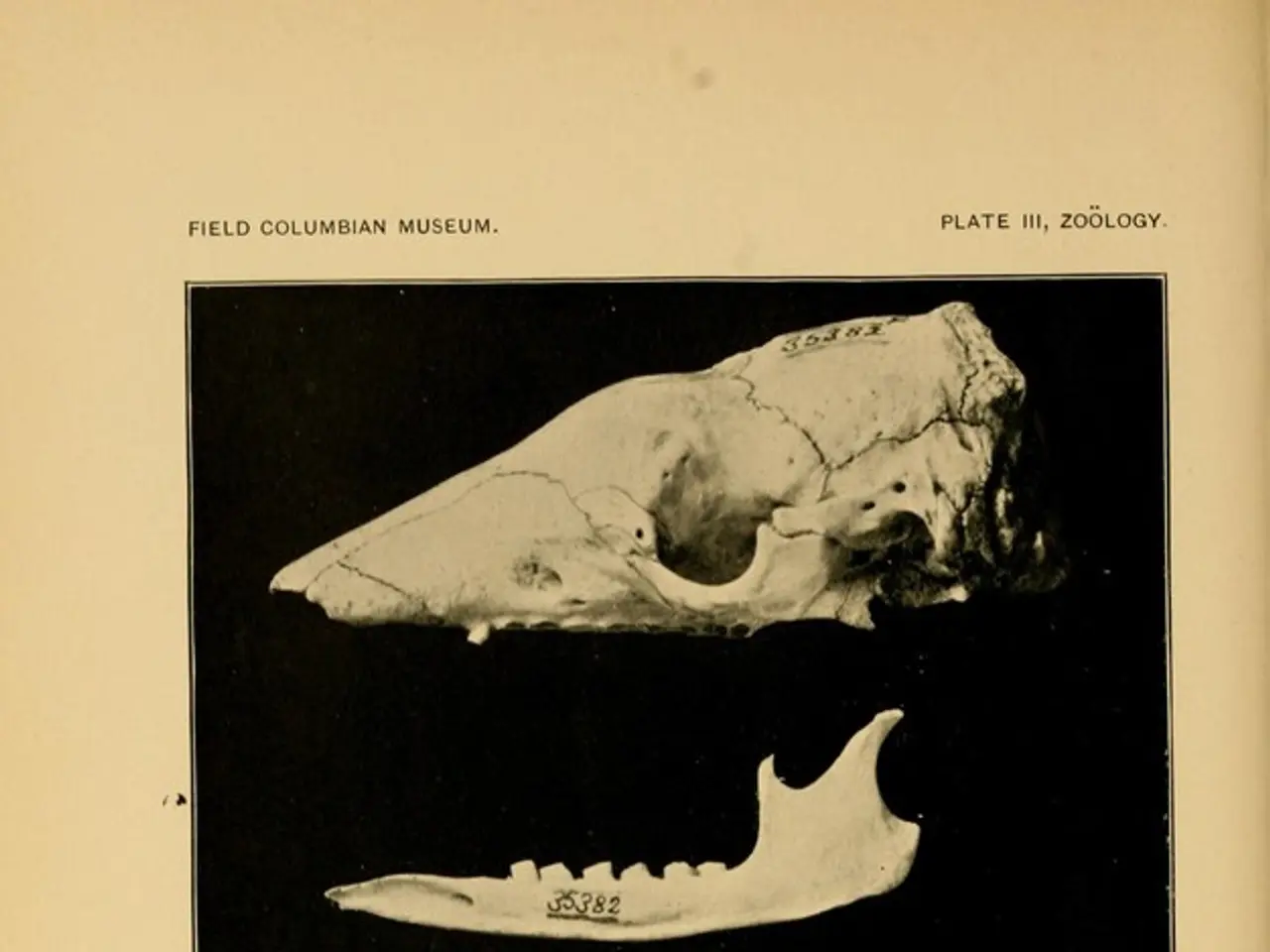Middle-aged female osteoporosis: symptoms and remedies
In a bid to combat the silent epidemic of osteoporosis, researchers and medical professionals are emphasising the importance of evidence-based strategies for middle-aged women. These strategies focus on lifestyle, diet, exercise, and medical guidance to help maintain bone density, reduce fracture risk, and slow bone loss.
**Regular Exercise**
Engaging in weight-bearing exercises such as walking, running, dancing, or aerobics is crucial. These activities apply mechanical stress to bones, stimulating bone growth and strength. Resistance training, like weightlifting or using resistance bands, also strengthens muscles and bones. Balance and flexibility exercises, such as yoga or tai chi, are essential for reducing fall risk and fractures. Aim for a workout routine that involves weight-bearing and resistance exercises 2-4 times weekly, with balance/flexibility exercises 2-3 times weekly.
**Nutrient-Rich Diet**
A diet rich in calcium is vital. Foods like leafy green vegetables, dairy, fortified foods, tofu, and almonds are excellent sources. Ensuring adequate vitamin D, through fatty fish, egg yolks, fortified foods, supplements, and sensible sun exposure, aids calcium absorption. Key minerals like magnesium and potassium, found in nuts, seeds, bananas, and beans, are also essential. Eating sufficient protein, vital for the bone matrix, can be sourced from lean meats, fish, eggs, and legumes. Limit sodium and caffeine intake as they can reduce calcium levels in bones.
**Lifestyle Modifications**
Quitting smoking and avoiding starting smoking is crucial, as it impairs calcium absorption and bone formation. Limiting alcohol consumption to no more than one drink per day for women can reduce bone weakening.
**Medical Monitoring**
Undergoing bone density screening, especially if you are postmenopausal under 65 with risk factors, over 65, or have had fractures from minor falls, is essential. Early detection can guide interventions. Discuss with your doctor about any medications or health conditions that might affect bone health and ask about treatments or supplements if necessary.
Adopting these strategies helps maintain bone density, reduce fracture risk, and slow bone loss, thereby effectively preventing osteoporosis. Regular check-ups and medication reviews are necessary for monitoring bone health and assessing the effectiveness of the treatment plan. Researchers are continually studying osteoporosis to develop more effective prevention strategies and treatment options.
For individuals with osteoporosis, regular physical activity is crucial for maintaining bone density and overall well-being. Strong muscles reduce the risk of bone fragility, and exercise that builds muscle stimulates bone growth. Fractures from osteoporosis can occur in various parts of the body, but the wrist, hip, and spine are the most common sites.
Caregivers can play a crucial role in maintaining bone health and overall well-being of individuals with osteoporosis by encouraging healthy diets, medication management, fall prevention, physical activity, and emotional support. Mental health support is important for individuals living with osteoporosis to cope with feelings of depression or anxiety.
Osteoporosis is a condition that weakens the internal structure of bones, making them prone to fractures. Fractures can occur in various parts of the body, but the wrist, hip, and spine are the most common sites. Calcitonin, Raloxifene, Bisphosphonates, Denosumab, Parathyroid hormone, and other medications are used for osteoporosis treatment, each with its own benefits and risks.
In conclusion, adopting a proactive approach to bone health through regular exercise, a nutrient-rich diet, lifestyle modifications, and medical monitoring can significantly reduce the risk of osteoporosis and its associated fractures. Early detection and appropriate treatment are key to maintaining bone health and overall well-being.
- Middle-aged women are encouraged to engage in weight-bearing exercises like walking, running, and yoga to promote bone growth and strength.
- Resistance training, such as weightlifting or using resistance bands, can strengthen muscles and bones, benefiting middle-aged women.
- Balance and flexibility exercises are essential for reducing fall risk and fractures in middle-aged women.
- Aim for a workout routine that involves weight-bearing and resistance exercises 2-4 times weekly, with balance/flexibility exercises 2-3 times weekly.
- A diet rich in calcium is vital for middle-aged women, with foods like leafy green vegetables, dairy, tofu, and almonds being excellent sources.
- Vitamin D aids calcium absorption, found in fatty fish, egg yolks, fortified foods, supplements, and sensible sun exposure.
- Key minerals like magnesium and potassium, found in nuts, seeds, bananas, and beans, are essential for middle-aged women's bone health.
- Eating sufficient protein, vital for the bone matrix, can be sourced from lean meats, fish, eggs, and legumes.
- Limit sodium and caffeine intake as they can reduce calcium levels in bones for middle-aged women.
- Quitting smoking is crucial for middle-aged women, as it impairs calcium absorption and bone formation.
- Limiting alcohol consumption to no more than one drink per day can reduce bone weakening for middle-aged women.
- Undergoing bone density screening is essential for middle-aged women with risk factors, particularly if postmenopausal under 65, over 65, or with a history of fractures.
- Early detection of osteoporosis help in guiding interventions for middle-aged women.
- Discuss with your doctor about any medications or health conditions that might affect bone health and ask about treatments or supplements if necessary.
- Adopting these strategies helps maintain bone density, reduce fracture risk, and slow bone loss, thereby effectively preventing osteoporosis.
- Regular check-ups and medication reviews are necessary for monitoring bone health and assessing the effectiveness of the treatment plan.
- For individuals with osteoporosis, regular physical activity is crucial for maintaining bone density and overall well-being.
- Mental health support is important for individuals living with osteoporosis to cope with feelings of depression or anxiety.
- Osteoporosis can occur in various parts of the body, but the wrist, hip, and spine are the most common sites.
- Calcitonin, Raloxifene, Bisphosphonates, Denosumab, Parathyroid hormone, and other medications are used for osteoporosis treatment.
- The healthcare industry is continually studying osteoporosis to develop more effective prevention strategies and treatment options.
- Medicare can provide coverage for bone density screening and certain treatments for osteoporosis.
- CBD oil has shown some potential in helping to relieve pain and improve quality of life in individuals with osteoporosis.
- Environmental science plays a role in understanding the impact of climate change on bone health, as warmer temperatures can lead to reduced calcium levels in soil and water.
- Nutrition plays a crucial role in maintaining overall health and wellness, which is important for women's health, including osteoporosis prevention.
- Fitness and exercise, along with a nutrient-rich diet, are essential elements of a comprehensive aging strategy for effective osteoporosis prevention.
- Autoimmune disorders can affect bone health and increase the risk of osteoporosis, making it important to manage such conditions.
- Caregivers can support individuals with osteoporosis by encouraging healthy diets, medication management, fall prevention, physical activity, and emotional support.




